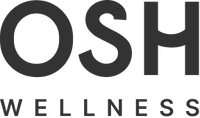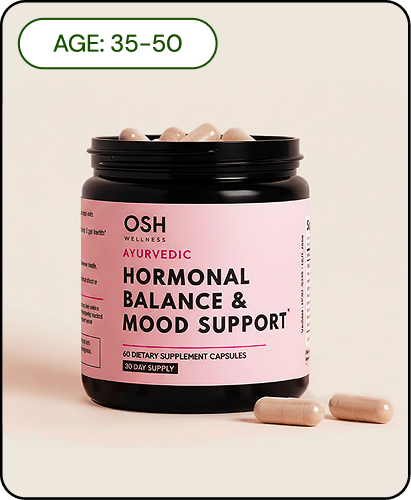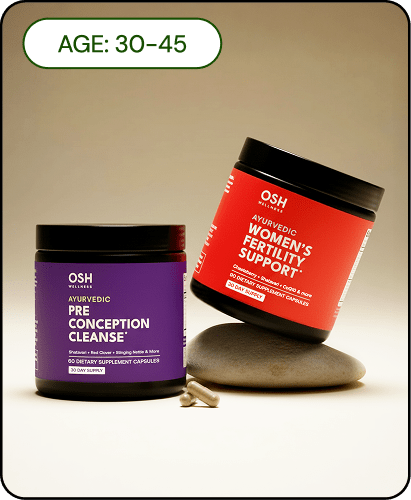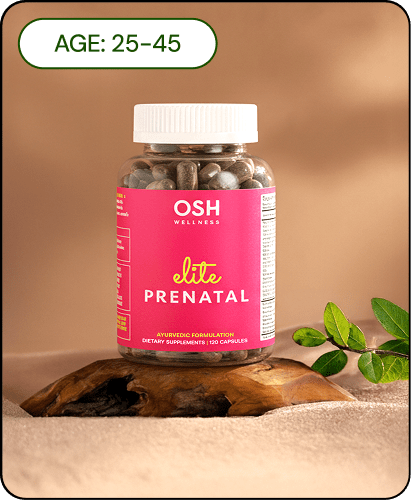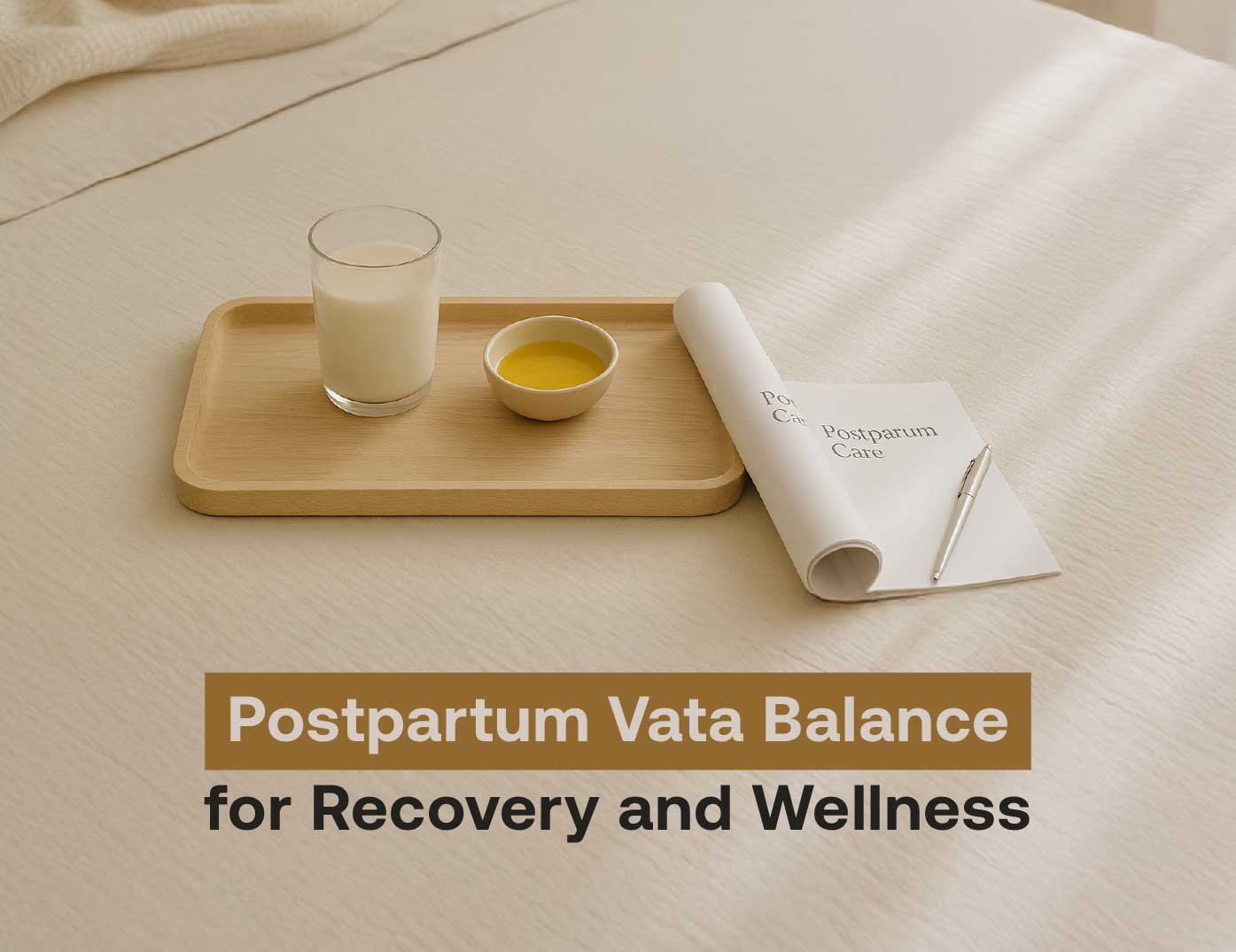Table of contents
After childbirth, many women experience a complex web of physical challenges that are often overlooked in postpartum care. One of the most significant yet under-discussed issues is the imbalance of the Vata dosha, which governs movement and elimination. This article explores how this imbalance affects both pelvic floor health and digestive functions, offering insights rooted in Ayurvedic philosophy. By understanding these connections, new mothers can adopt effective strategies to restore balance, enhance recovery, and support overall well-being.
Understanding Vata Dosha

The concept of Vata dosha is foundational in Ayurveda, especially when addressing women's health after childbirth. Vata is one of the three doshas, representing the elements of air and ether (space). Its qualities, lightness, dryness, roughness, mobility, and coldness, become especially relevant during the postpartum stage.
Childbirth leads to an increase in Vata due to various factors:
Loss of bodily fluids and energy
Abdominal emptiness post-delivery
Hormonal shifts disrupting sleep and breastfeeding routines
This elevated Vata manifests as anxiety, insomnia, mood swings, cold sensations, and even physical tension like shoulder aches [1][2]. In Ayurveda, these indicate Vata imbalance, which can hinder physical recovery and emotional adjustment to motherhood.
To counterbalance, Ayurvedic postpartum care emphasizes grounding, nourishing routines. Key measures include:
Consuming warm, oily, and nutrient-rich meals
Practicing daily Abhyanga (oil massage), which supports emotional and tissue healing
The first 42 days postpartum are considered critical in Ayurveda for rebalancing Vata and establishing long-term wellness [4].
Pelvic Floor Health After Childbirth

Pelvic floor health is vital for maternal recovery, as these muscles support organs like the bladder, uterus, and rectum. Vaginal delivery can overstretch or injure pelvic muscles, leading to urinary incontinence, pelvic organ prolapse, and pain during intercourse [5].
An increased Vata dosha postpartum can contribute to pelvic floor dysfunction, often presenting as:
Constipation and pelvic pain
Anxiety or emotional instability
Weakness and tension in pelvic muscles
Pelvic floor therapy is essential in recovery and may include:
Pelvic floor muscle training (Kegels)
Manual therapy for tension relief
Biofeedback and electrical stimulation for neuromuscular training
Lifestyle factors further support healing. These include hydration, consuming fiber-rich foods, and minimizing stress to avoid aggravating Vata.
Persistent symptoms, such as severe pain, sexual dysfunction, or urinary leaks, should prompt consultation with a pelvic floor specialist or urogynecologist [6][7].
Digestive Health in the Postpartum Period

After giving birth, maintaining healthy digestion is fundamental to overall maternal well-being. In Ayurveda, this is governed by Agni, or digestive fire. Balanced Agni ensures efficient nutrient absorption, elimination, and energy flow.
Postpartum digestive imbalances often include:
Constipation and bloating
White-coated tongue and mental fog (signs of weakened Agni)
Fatigue and emotional distress
To nurture Agni and counteract Vata-induced sluggishness, Ayurveda recommends:
Warm, moist, and easy-to-digest foods like soups, porridges, and soft grains
Use of digestive spices such as cumin, ginger, and fennel
Healthy fats like ghee or coconut oil for stool softening and hormonal support
Gentle movement like postnatal yoga, spice teas, and adequate emotional rest also support healthy digestion [8].
Dietary Recommendations for Balancing Vata

Diet plays a key role in correcting Vata imbalance, especially after childbirth. A Vata-pacifying diet emphasizes warm, moist, and grounding foods.
Key recommendations include:
Warm stews, porridges, and broths
Lubricating foods such as ghee, sesame oil, and cooked vegetables
Soaked almonds, seasoned lentils, and toasted coconut for added nourishment
Spices like turmeric, ginger, and cumin can ease digestion and encourage blood flow. Avoid raw or pungent foods that may dry or chill the system.
Simple Ayurvedic dish suggestion: Ghee Rice Porridge – prepare rice with warm water, add cumin and sautéed seasonal vegetables, and finish with a spoonful of ghee. Ideal for gentle nourishment in early recovery [10].
Routine and Self-Care for Recovery

A structured postpartum routine incorporating self-care is pivotal for both physical healing and emotional well-being.
Important components include:
Balanced meals for tissue repair and lactation
Physician-approved light exercise, such as walking or stretching
Linings of holistic care also involve pelvic health attention through exercises like Kegels, and managing stress using tools like meditation, deep breathing, or guided relaxation.
Ayurvedic practices like oil self-massage, Vata-pacifying meals, and warm baths integrate both emotional grounding and physical healing [11].
Challenges and Solutions in Postpartum Recovery

Recovery can be hindered by physical fatigue and mental health conditions such as postpartum depression (PPD) or anxiety. Symptoms include mood swings, hopelessness, and emotional disconnection.
Solutions involve both medical and holistic approaches:
Therapeutic interventions like CBT and support groups
Safe pharmaceuticals, including antidepressants compatible with breastfeeding [12]
Ayurvedic applications like Abhyanga, herbal therapies, and warm spiced diets
A nurturing environment and compassionate support significantly enhance emotional recovery. Combining Ayurveda with modern medicine offers a comprehensive postpartum strategy customized to a mother’s needs [13].
Relevant Products
Osh Wellness Lactation Support products offer a natural way to support postpartum recovery. Formulated according to Ayurvedic principles, they provide essential nutrients that help regulate digestion and harmonize Vata, thus aiding overall healing.
Conclusions

Balancing Vata is crucial for effective postpartum recovery, particularly for pelvic floor strength and digestive vitality. Nutrition, routines, and mind-body practices all contribute meaningfully to this healing process. By embracing integrative approaches rooted in Ayurveda and modern healthcare, new mothers can achieve smoother recoveries and build resilient well-being during this transformative time.
FAQs
What are the signs of Vata imbalance postpartum?
Symptoms include anxiety, insomnia, dryness, restlessness, constipation, and pelvic discomfort.
How can I support my pelvic floor health after childbirth?
Practice Kegel exercises, seek pelvic floor therapy, and incorporate warm diets and rest.
What dietary changes should I make while recovering?
Eat warm, soft, oily foods; use digestive spices; avoid raw and cold items.
When should I seek professional help for pelvic floor issues?
If symptoms like urinary leakage, pain, or prolapse persist, consult a specialist.
Are there specific yoga practices that can aid in recovery?
Yes, gentle postnatal yoga focused on breath work and pelvic health can be helpful when cleared by a medical provider.
Sources
Kottakkal Ayurveda - A Practitioner’s Guide to a Healthy Pregnancy with Ayurveda Postpartum
Naya Care - Benefits of an Ayurvedic Diet for Postpartum Health
Medanta - Postpartum Wellness: Taking Care of Yourself After Delivery
Dr. Jasna's Ayurveda - Nurturing the New Mother: Ayurvedic Practices for Postpartum Mental Health
